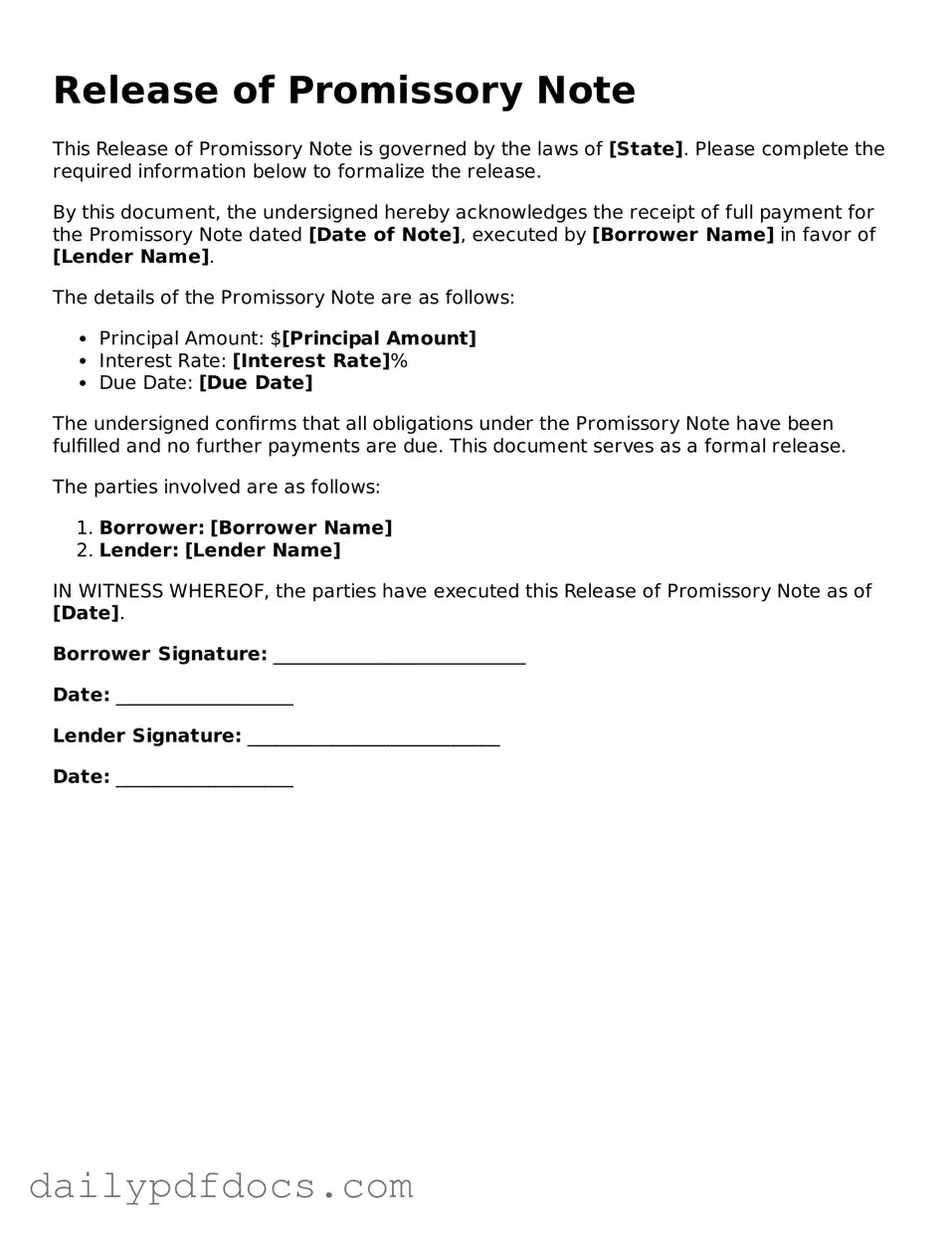Release of Promissory Note
This Release of Promissory Note is governed by the laws of [State]. Please complete the required information below to formalize the release.
By this document, the undersigned hereby acknowledges the receipt of full payment for the Promissory Note dated [Date of Note], executed by [Borrower Name] in favor of [Lender Name].
The details of the Promissory Note are as follows:
- Principal Amount: $[Principal Amount]
- Interest Rate: [Interest Rate]%
- Due Date: [Due Date]
The undersigned confirms that all obligations under the Promissory Note have been fulfilled and no further payments are due. This document serves as a formal release.
The parties involved are as follows:
- Borrower: [Borrower Name]
- Lender: [Lender Name]
IN WITNESS WHEREOF, the parties have executed this Release of Promissory Note as of [Date].
Borrower Signature: ___________________________
Date: ___________________
Lender Signature: ___________________________
Date: ___________________
